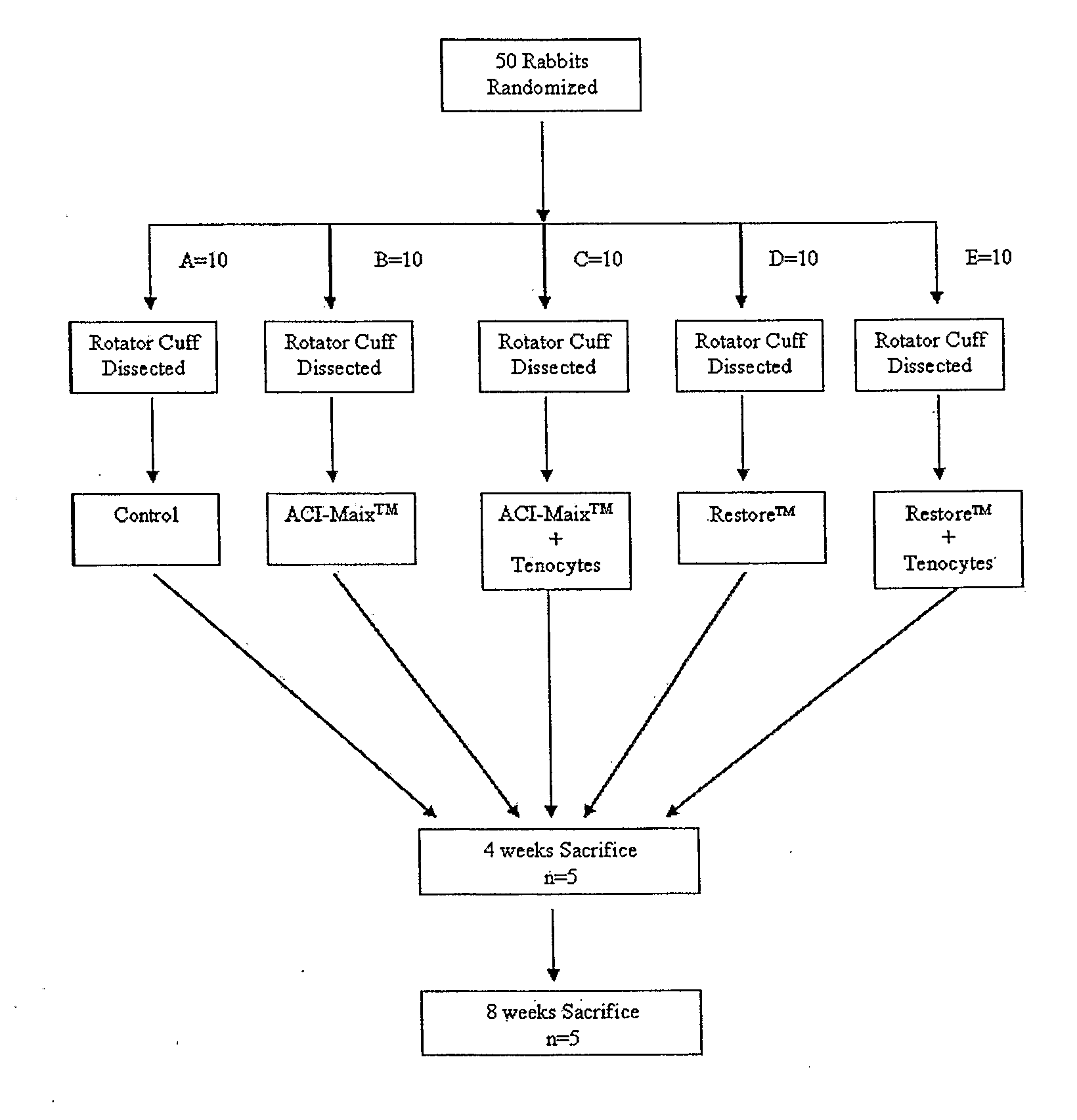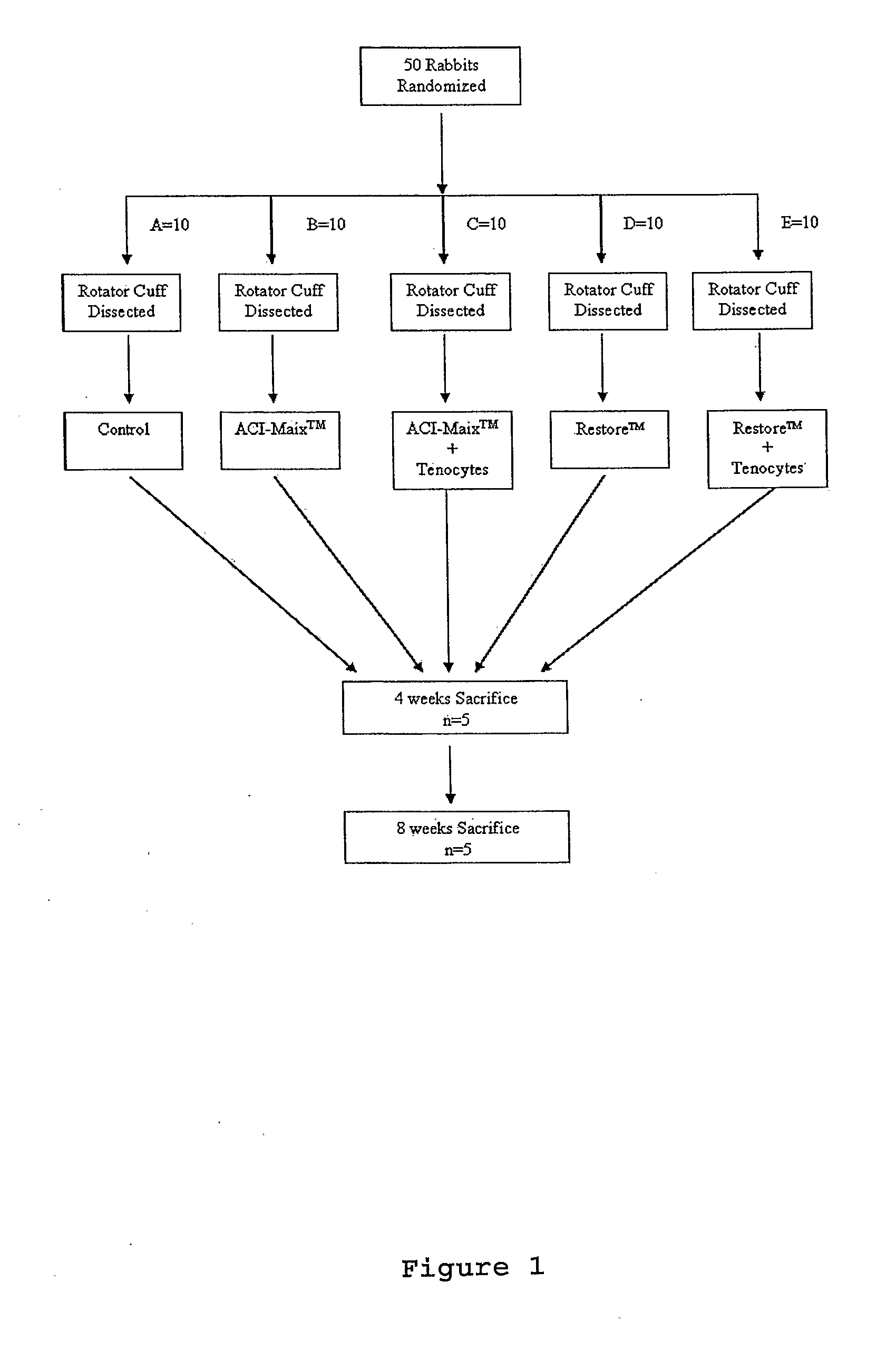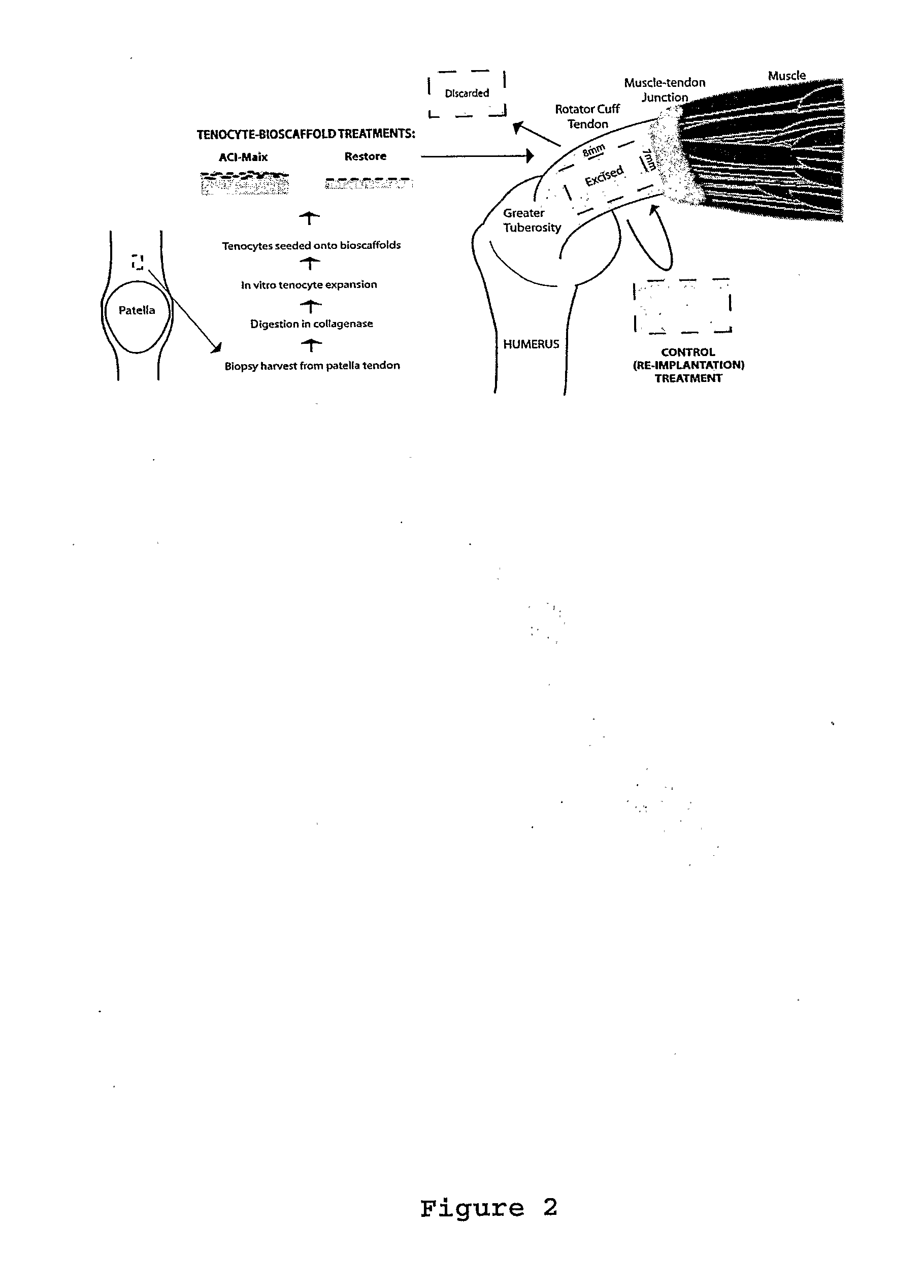Tenocyte containing bioscaffolds and treatment using the same
- Summary
- Abstract
- Description
- Claims
- Application Information
AI Technical Summary
Benefits of technology
Problems solved by technology
Method used
Image
Examples
example 1
Animals and Bioscaffolds
[0096]Fifty Albino New Zealand White (Oryctolagus cuniculus) rabbits between 12 to 20 weeks old with body weight between 3-5 kg were used in this study. All rabbits were bred from an out bred rabbit colony maintained in the animal house facility of the University of Western Australia (Nedlands, Australia). Rabbits were fed ad libitum with rabbit / guinea pig pellets, hay, and provided water ad libitum. Rabbits were held in cages measuring 1.5 m wide, 0.75 m long, and 0.75 m high, with grid floors to prevent pod dermatitis. All operative procedures and cage activities were conducted under strict guidelines detailed by the National Health and Medical Research Council (NHMRC, Can berra, Australia).
[0097]Porcine-derived type I / III collagen bioscaffold (ACI Maix™) was supplied and manufactured by Matricel (Herzogenrath, Germany). The collagen bioscaffold is a white complex with two different sides: the rough side and the smooth side. The rough side appears as cross ...
example 2
Experimental Design
[0098]The fifty rabbits were randomly allocated into five groups of ten (FIG. 1). The left rotator cuffs were fully dissected and reconstructed by one of the five following methods: (1) Group A (Control treatment): The tendon excised during defect creation was in situ reimplanted into the defect immediately and sutured to the bone trough using 5-0 absorbable sutures; (2) Group B (ACI-Maix™): The defect was repaired by suturing ACI-Maix™ collagen bioscaffold as an interposition graft to the native tendon and bone trough borders; (3) Group C (ACI-Maix™ with autologous tenocytes): The cell-bioscaffold composite was used to repair the cuff defect in an identical manner to Group B; (4) Group D (Restore™): The cuff defect was repaired in an identical manner to Group B, but using Restore™ as an interposition graft; and (5) Group E (Restore™ with autologous tenocytes): The tenocytes seeded Restore™ composite was used to repair the cuff defect in an identical manner to Gro...
example 3
Harvest and Culture of Tenocytes
[0100]As shown in FIG. 2 tendon tissue of 3 mm diameter was obtained by biopsy punch from the rabbit patellar tendon and was washed in DMEM F-12 medium (GIBCO, Invitrogen, USA) supplemented with 10% fetal bovine serum (FBS), 100 μ / ml penicillin and 100 μg / ml streptomycin (hereafter medium refers to the same contents). The tendon tissue was then dissected into 0.5 mm of diameter and digested with collagenase (100 UI / ml Gibco, Invitrogen, USA) over night at 37° C. After the digestion, the solution was filter through a 0.22 μm filter to remove matrix debris and the cells released from tissue were centrifuged into pellet at 2000 rpm for 8 min. Supernatant containing enzymes were discarded and the pellet was resuspend in new medium. This washing process was repeated three times.
[0101]The cell pellet of resultant tenocytes was then resuspended in 5 ml of medium and placed into a culture flask at density between 103 to 104 cells / ml containing culture medium....
PUM
| Property | Measurement | Unit |
|---|---|---|
| Fraction | aaaaa | aaaaa |
| Time | aaaaa | aaaaa |
| Time | aaaaa | aaaaa |
Abstract
Description
Claims
Application Information
 Login to View More
Login to View More - R&D
- Intellectual Property
- Life Sciences
- Materials
- Tech Scout
- Unparalleled Data Quality
- Higher Quality Content
- 60% Fewer Hallucinations
Browse by: Latest US Patents, China's latest patents, Technical Efficacy Thesaurus, Application Domain, Technology Topic, Popular Technical Reports.
© 2025 PatSnap. All rights reserved.Legal|Privacy policy|Modern Slavery Act Transparency Statement|Sitemap|About US| Contact US: help@patsnap.com



